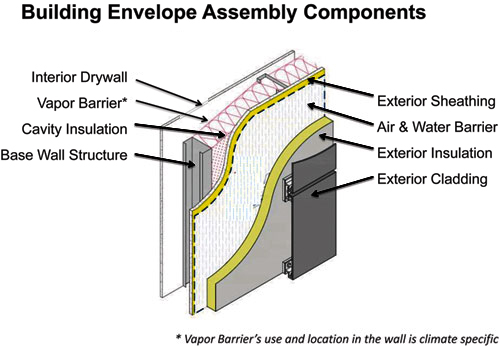Navigating Wall Assembly Fire Testing
Consequently, NFPA 285 is proving to be quite a source of confusion among architects.
Earlier versions of the IBC contained ambiguous language, so it appeared that most construction types were exempted from NFPA 285, explains Richard Keleher, AIA, CSI, LEED AP, senior architect, Thompson & Lichtner, Cambridge, Massachusetts. But now that the language in the IBC has been clarified, and NFPA 285 compliance is anticipated to be more fully applied and enforced, architects have been taken by surprise. “In fact, in my 45 years of professional practice. I have not seen a single issue that has given architects such uncertainty,” he states.
Offering his perspective, David W. Altenhofen, AIA, East Coast director, The Façade Group, Philadelphia, notes that for decades, so many buildings have been constructed, without question, with foam plastic insulation in the cavity behind brick veneer.
“As the construction industry incorporated more and more drained cavity rain screen wall systems with veneers of metal panels, aluminum composite materials, terra cotta, etc., it was a natural transition to just keep using the foam plastic insulation in the cavity,” he says. “At the same time, code officials did not seem to be aware of the NFPA 285 requirements and weren't challenging architects. Now the industry is on a steep learning curve to catch up.”
Passing NFPA 285
Of course, the first step in dealing with NFPA 285 is determining if, in fact, the specified assembly requires testing. For starters, the noncombustible components in the wall assembly—including the base wall structure, interior drywall, and exterior sheathing—are not test triggers, but they must be considered as part of the complete wall assembly. This is because the noncombustible members can influence the overall results by interacting with the combustible components in the test.
“The key thing to keep in mind is that the NFPA 285 test is not a material test. The intention of the test is to assess the fire performance of a specific wall assembly, as a system,” explains Jason Martin, P.E., commercial building technical R&D leader, DuPont Building Innovations, Richmond, Virginia.
 |
|
A typical building enclosure assembly Image courtesy of DuPont Building Innovations |









